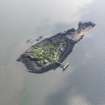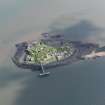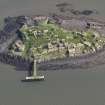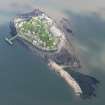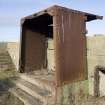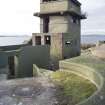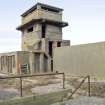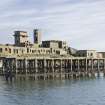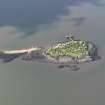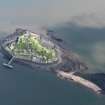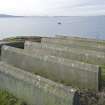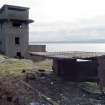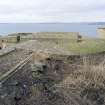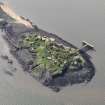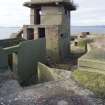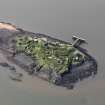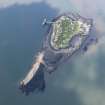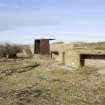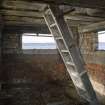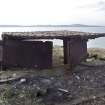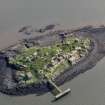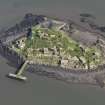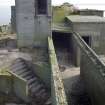Forth Defences, Middle, Inchmickery Battery, 12-pounder And 4-inch Gun Emplacements.
Anti Aircraft Battery (Second World War)(Possible), Coastal Battery (First World War), Military Camp (First World War), Observation Post (First World War)
Site Name Forth Defences, Middle, Inchmickery Battery, 12-pounder And 4-inch Gun Emplacements.
Classification Anti Aircraft Battery (Second World War)(Possible), Coastal Battery (First World War), Military Camp (First World War), Observation Post (First World War)
Alternative Name(s) Forth Defences; World War I
Canmore ID 121776
Site Number NT28SW 1.02
NGR NT 2066 8056
NGR Description Centred NT 2066 8056
Datum OSGB36 - NGR
Permalink http://canmore.org.uk/site/121776
- Council Edinburgh, City Of
- Parish Edinburgh (Edinburgh, City Of)
- Former Region Lothian
- Former District City Of Edinburgh
- Former County Midlothian
A map titled "Record Plan of defences Erected on Mobilization" and dated July 1915 (The National Archives WO 78/4417) shows the layout of features on Inchmickery at the time of its first defence in that year. The island was fortified in 1915 as part of the Middle line of defence of the Forth, and specifically to cover the anti-submarine boom that ran from Burntisland Sands to Cramond Island.
The map shows the location of the four gun emplacements labelled "F" and "B" Groups, guns No. 1 and No. 2. It also shows two Defence Electric Lights, on the NE and S ends of the island. The map also shows the location of the quarters of the officers and men, the cook-house, engine room and other offices.
When the defences of the Forth were restructured in 1916 (The National Archives WO 78/5163) the emplacements were rebuilt on a slightly different alignment. The 12-pdrs on Inchmickery were replaced by four 4-inch Mk III guns transferred from the island of Inchgarvie, below the Forth Rail Bridge (The National Archives WO 192/108 [Inchcolm Fort Record Book]. They were ready for action between November 1916 and January 1917.
The emplacements for the four guns were not re-used for guns in the Second World War, but an Un-rotating Projectile weapon may have been mounted on the site of one.
Information from HS/RCAHMS World War One Audit Project (GJB) 19 August 2013
NT28SW 1.02 2066 8056
This four gun emplacement in the centre of the island has been built in one line. In addition are the observation position, magazines and searchlight platforms.
The construction period for this battery was protracted, the concrete pier being completed during July 1940 and two guns being installed during May 1940, two more being fitted in July. Living accommodation was installed in June 1941.
J A Guy 1997; NMRS MS 810/5, 109,112,116-18; PRO WO/192/256
A short visit was made to the island in late February 2010 by RCAHMS to undertake a rapid photographic survey. The field investigator noted the remains of possibly three First World War gun emplacements set along a concrete platform. A three storey Battery Observation Post also survives in the centre of the platform.
The large concrete gun emplacement at the W end of the platform, has a more recent water tank base built over the gun pit. The central emplacement has been filled in and the holdfast removed, whilst a gun pit and holdfast survive at the easternmost end.
Three gun WW I emplacements with one WW II Unrotating Projectile (UP) holdfast (NT 20667 80607). The most westerly emplacement has been re-used as a support for a water tank.
Visited by RCAHMS (DE, AL), 23 February 2010
Project (March 2013 - September 2013)
A project to characterise the quantity and quality of the Scottish resource of known surviving remains of the First World War. Carried out in partnership between Historic Scotland and RCAHMS.
Field Visit (7 September 2015)
As previously noted by the RCAHMS field investigator the remains of three of the four emplacements dating to 1916 re-armming with 4-inch can be seen. The remains of part of the concrete apron for the south most 4-inch gun can still be seem on sloping ground to the S of the World War Two twin 6-pounder emplacement.
Visited by RCAHMS (AKK) 7 September 2015.






































